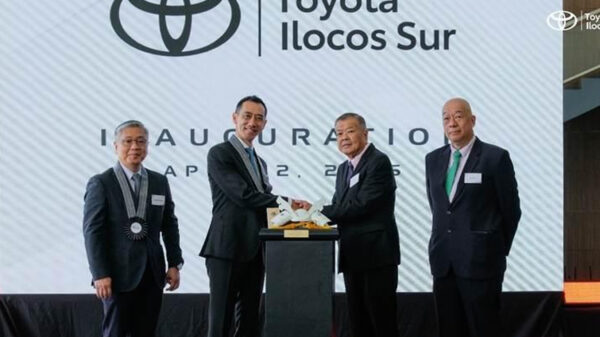Bloomberg Television is Bloomberg Media’s global business and financial television network, available in more than 437 million households worldwide. The network streams live on Bloomberg’s digital and mobile properties, along with Apple TV, Amazon Fire TV, Android TV, Samsung TV and Roku. A world-class network infrastructure was needed to support the availability, reliability, and performance needed for eight hours of live television and four hours of live radio every day.
Their new media production network connects the central studio, three other broadcast positions, two recording studios, a photography studio and three control rooms and all of Bloomberg TV’s production equipment. The all-IP data network includes 90+ network nodes, 400+ 40GbE network fabric links, 4,000+ network ports, and 2,000+ live network endpoints connecting at a combination of 10GbE, 40GbE and 100GbE – not to mention a 14 petabyte video storage system.
The opportunity
Tony Lott, Bloomberg Global Head of Capital Projects for the company’s IT infrastructure team, along with Bloomberg Project Leader Inderpal Khattran, saw the new facility as an opportunity to create from scratch a radical state-of-the-art network. And their vision was to deliver it on time and within budget to support today’s operations and well into the future.
They opted for spine-leaf topology to provide consistency of data volume, scale and deterministic application performance. Bloomberg Television’s reputation depends on providing a seamless broadcast experience for a worldwide audience of millions, so they wanted automation to continuously check, monitor, and validate the health of the network. The need for greater insight into the network fabric created a long checklist of stringent compliance requirements, including a dashboard that showed the health of the network and compliance to the stakeholders across the Operations, Security and Compliance departments. They needed a single platform able to collect all the telemetry from a variety of switch models and vendors in an agnostic manner, to normalize the data and store it in such a way that the engineering teams could query it in real-time.
Bloomberg Television runs its own broadcast TV playout across one of the spine-leaf fabrics within the campus building. So the IT department wanted the equivalent capability for the multicast traffic on that network – a notoriously difficult task, as the multicast network’s state is constantly moving and changing.
The solution
Bloomberg Television’s IT team looked at several solutions and combinations before opting for an intent-based, vendor agnostic solution. Intent-Based Analytics is not just about gathering telemetry, it’s about processing the telemetry using a sophisticated big data pipeline and comparing it against a single source of truth (i.e. “intent”) to validate that the networking meets intent across general health, performance, traffic and compliance.
No other solution could match Apstra’s Intent-Based Data Center Automation. It not only could ensure the general health and performance of the network, the Apstra Operating System (AOS) could be programmed to verify that the network met compliance at all times – for example, to certify that all new software going into their environment met the proper criteria for compliance.
Mansour Karam, Apstra’s Founder and CEO, explained the initial task: “When we came in to the Bloomberg building, the network was already there. So, what we had to do was discover the state of the network, the topology of the network, the capabilities of the network, with our solution. [AOS has] this network discovery capability that is critical for brown-field environments so that we can come into an already-existing environment that we leveraged and enhanced in order to deliver on Bloomberg’s requirements and deploy our solution in their environment”.
One of Bloomberg Television’s requirements
was that the AOS agents run off-box. Karam explained: “When we launched the
solution initially, we had on-box agents. These agents ran on the devices.
That’s how we had it packaged, but it wasn’t a requirement of the architecture.”
He added: “We have a distributed architecture with our product where it’s a
very modular architecture. Every service, every piece of logic, is implemented
as a separate process, including those agents in which they’re experts at the
devices that the solution controls. In fact, this concept of agents is critical
to the ability for our solution to be multi-vendor, because these agents are
the experts at those devices.” So, for Bloomberg, they were readily able to run
the agents off-box as required.
The solution was secured and certified for Bloomberg Television’s data center
and soon proved its ability to continuously validate operator’s intent, while
providing an early warning indicator of potential grey failures. An immediate
benefit was that a number of existing network issues were immediately
pinpointed – issues that no-one had yet detected. Such visibility into grey
failures and Root Cause Identification is critical for such a complex and
changeable environment – zero downtime
is an absolute must for a broadcast TV network.
The reward
With immediate answers to detailed questions about the network’s health and performance, Tony Lott’s team can take preventative action long before issues become noticeable to the production staff. For compliance purposes, the team has gained a single point of reference, according to Tony Lott: “Apstra’s system gives us a single view into the entire network – regardless of our devices, switches, operating systems or vendors. It has enabled us to gain the day-2 operations efficiency needed to manage and sustain the complex network infrastructure in our cutting-edge facility.” It has already helped to reduce the company’s OPEX by almost half.
Back-end network infrastructure, security, and compliance are vital for delivering a seamless broadcast TV experience for millions of viewers around the world. As Karam said: “This is a very modern, state-of-the-art building… Because of its stringent requirements, the decision was to have a network in there that is datacentre-class, very similar to the type of networks you have in datacentres. So, while it was a deviation from our market segment focus, the technology was very aligned with what our technology was capable of doing”.
“What we’re seeing across the globe is that new campuses, new buildings, are really transforming… There is this concept of smart buildings – with IoT, with digital transformation, with the requirement for sustainability – putting a much bigger load on the network as the foundation to deliver on those requirements as part of those state-of-the-art modern campuses.”
Conclusion
Network architects and engineers in a wide range of business sectors face similar challenges, and technologies originally inspired by the needs of hyperscale data centers now offer remarkably elegant solutions. That is partly why this deployment is so significant. Lott, Karam and the Bloomberg IT team would agree: this surely is the way to go.











































































































